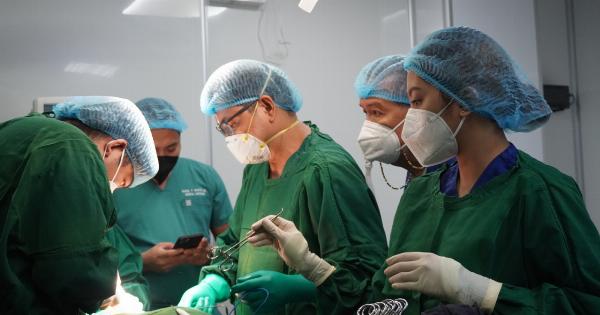Heart surgery is a critical procedure that helps save the lives of many people. However, like any surgical procedure, it comes with its risks.
While the risk of death during heart surgery is low, there are some factors that increase the risk of death after heart surgery. These factors can be related to the patient’s health, the type of surgery performed, and the hospital’s protocols and procedures.
Patient Factors
The patient’s overall health, age, and other medical conditions play a crucial role in determining the risk of death after heart surgery. Some of the patient factors that can increase the risk of death after heart surgery include:.
1. Age
As the human body ages, it becomes more susceptible to health-related issues. Seniors undergoing heart surgery have a higher risk of death compared to younger patients.
2. Existing Medical Conditions
Patients with pre-existing medical conditions like diabetes, lung disease, or kidney disease have a higher risk of complications during and after heart surgeries like coronary artery bypass graft (CABG) surgery.
3. Obesity
Obesity puts extra pressure on the heart. Overweight individuals have a higher risk of heart-related complications during surgery and a higher risk of death post-surgery.
4. Smoking
Smokers have a higher risk of death associated with heart surgery compared to non-smokers. Smoking causes damage to the heart and lungs, making it harder for the body to heal after surgery.
Type of Surgery Performed
The type of heart surgery performed can also increase the risk of death post-surgery. Some of the surgical procedures that have a higher mortality rate include:.
1. Coronary Artery Bypass Graft (CABG) Surgery
CABG surgery involves rerouting a portion of blood vessels from the chest wall or arm to bypass blocked coronary arteries. This type of surgery carries a higher mortality rate than other forms of heart surgeries, especially in high-risk patients.
2. Emergency Surgeries
Emergency heart surgeries have higher mortality rates than non-emergency surgeries. Emergency heart surgeries present more challenges for the surgeon and medical team in terms of managing the patient’s condition and post-operative care.
Hospital Protocols and Procedures
The hospital’s protocols and procedures can impact the risk of complications and death associated with heart surgery. Some of the hospital factors that can increase the risk of death include:.
1. Inexperienced Surgeons
The skill and expertise of the surgeon performing the surgery could impact the patient’s recovery and potential for complications. More experienced surgeons have lower mortality rates.
2. Hospital Volume
Hospitals that perform more heart surgeries have lower mortality rates than those that perform fewer.
Hospitals with a more significant number of surgeries performed have more experienced teams and a better infrastructure to handle complications that may arise.
3. Hospital Resources
Hospitals with access to specialized medical equipment and resources have lower mortality rates than those without. Equipment like intraoperative echocardiography can help detect potential complications and reduce the risk of death post-surgery.
Conclusion
Heart surgery is a complicated and risky procedure. While the risk of death during heart surgery is low, several factors can increase the risk of mortality post-surgery.
Patients with pre-existing medical conditions, seniors, and those undergoing CABG surgery have a higher risk of complications and death post-surgery. Hospitals’ resources, protocols, and surgeon experience are also factors that impact the risk of death.
Reducing these risks requires comprehensive care that involves the patient’s overall health, timely and skilled interventions, and access to the right equipment and resources.





























